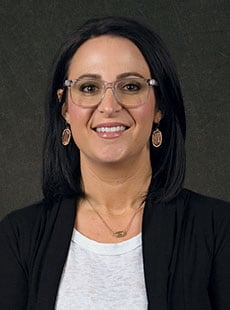 Course Introduction
Course Introduction
Core Standards of the Course
STRAND 1
Students will analyze influencer marketing and the communities that influencers are able to build through social media.
Standard 1
Define who an influencer is and discuss examples of how social media transformed this career.
-
Discuss how Influencers have been part of marketing from the beginning. TV celebrities, sports stars, and politicians have all been influencers. Social Media has changed the career to include anyone that has a passion or expertise and a platform.
- Influencer profile: either a persona (made-up) or an authentic individual that reflects a certain personality, value, and belief system. Used to gain followers and create a community for a variety of topics through social media.
- Examples: Politicians, Community Advocates, Authors, Artists, Designers, Celebrities, and Governments.
-
Digital Assets: generally anything that is created and stored digitally. Ex. images, video, written content, and ownership rights.
-
Digital Branding: the process of using digital assets to create an online brand identity that can be expressed on virtually any digital channel, like your website, social media profiles, digital ads, and content marketing.
-
Influencer Community: made up of people who are active on social media and have built up a following with their topics.
-
Influencer Content: digital assets created to reach new or larger audiences by leveraging the credibility and social followings of influencers.
-
Reach The number of people who see your content
-
Engagement Measurements
-
Trends/Trending: Popular strategies
Standard 2
Discuss how people can be impacted by influencers in both the positive and negative in buying or other social behaviors.
-
Positive/Negative Influencers: understand the widespread influence they have, and the power they have to build up and elevate, or tear down.
-
Organic: naturally generated followers, content, or posts that occur in your social media feed without the influence of paid distribution.
-
Cause Influencer/Marketing: A partnership between an influencer and a non-profit or a business (for profit) that seeks to promote social good by using the influencer's reach. Used to also increase an influencer's reach and build credibility.
-
Borrowed Equity: Sharing the influence or credibility of a brand or another influencer to increase the reach and/or credibility of your brand.
-
Create content for a club, class, team, CTSO, or community project
-
Create a vision board that demonstrates an influencer or brand persona.
-
Analyze a recent social movement and how influencers have contributed to the cause.
STRAND 2
Students will identify traits and characteristics that describe various types of influencers and brands.
Standard 1
Discuss how a brand determines the influencers that they want to work with. Brands use influencers to market their products. The process of selecting the appropriate influencer starts by defining their target audience. This is often done by a community manager for the brand.
-
Target audience/marketing: A specific group or niche to which marketing is intended to appeal and affect
-
Community Manager: Individual responsible for growing, developing, and maintaining relationships between brands, digital community, and/or influencers.
Standard 2
Describe how Influencers decide to be associated with a brand.
-
Buyer Persona: Representation of your ideal customers based on data and research
-
Marketing Segmentation: The process of dividing a market of potential customers into specific groups based on specific characteristics and differences.
-
Marketing Agencies: a service provider that creates or runs your influencer-based marketing
-
Influencer Agent: a representative that connects influencers with partnerships and brands.
-
Tagging brands: Naming a company or individual in an official and trackable manner
-
Campaign objectives: goals and specific desired outcomes of a marketing campaign
Standard 3
Discuss the importance of developing professional relationships with Brands.
-
Content Marketing: creating and distributing material online intended to be part of goal-based campaigns and strategies
-
Licensing Content: An agreement that allows others to reuse or republish existing content.
-
Influencer Contracts: An agreement between an influencer and a brand that details deliverables and payment.
-
Professionalism: Behaving in a manner appropriate for business relationships
-
Participative anthropology: The act of studying a community by immersing oneself into the community being studied.
-
Explore what kind of influencer you are and what you look for in an influencer.
-
Examine contract for a brand ambassador or influencer
-
Reach out to a local brand or to a local influencer
STRAND 3
Students will learn simple graphic design applications and video editing software to use in creating effective content.
Standard 1
Describe basic design principles that are essential to creating effective digital content.
-
Rule of Thirds: a guideline in composition that uses two lines vertically and horizontally to divide an image into nine equal portions and four intersection points.
-
White Space: empty or negative space around design elements that increase readability
-
Repetition: Using design elements multiple times in one layout
-
Readable font/typeface
-
Proper lighting
-
Royalty vs Royalty free stock images and video
-
Evaluate the quality of images and sound
Standard 2
Explore user-friendly design applications that are available to your students. i.e. Canva, Piktochart, Adobe Express, and others that provide pre-sized templates and easy-to-use designs.
-
Beginner influencers often use these tools to start growing followers. Some of the simplest forms of content are the following:
-
Static content:
Standard 3
Explore animation and video editing applications that allow you to create dynamic content that engages the target audience.
-
Describe basic camera frames in a video.
-
Describe basic camera movements
-
Camera Angles
-
Moving content
Standard 4
Discuss with students the need to repurpose content to drive engagement on different social media platforms.
-
Each varies by content and demographics. Look up the most current statistics.
- Instagram: photos and other visual media
- Pinterest: Tutorial, product, and consumer-focused visuals to drive conversion.
- LinkedIn: B2B-focused networking and brand building.
- Facebook: Conversation-driven interactions between pre-existing relationships.
- Tik Tok: Short form 30 sec. - 1 min.
- YouTube: Long-form 3 min. or longer
- Twitter: Copy content, dialogue, comments, breaking news
-
Create static content for a marketing campaign
-
Create moving content for a marketing campaign
-
Adapt content for one social media platform to be used on a different platform.
STRAND 4
Students will create copy, write content for influencers and demonstrate effective copywriting skills, for various content and email automation systems
Standard 1
Explore the types of copy used in social media posts.
-
Captions: A written description of a photo, video, or another post that may include text, hashtags, mentions, and emojis. Often used to drive engagement.
-
Using AI to help with the workload of content creation, evaluate the ethics of using it, how much and how often you use it, and if the copy is reflective of your brand's voice.
-
Call To Action (CTA): Asking the viewer to do something or encouraging action.
-
Blogs/Vlogs: Blogs are written content posted to a website and often organized into categories or archives. Vlogs are short for video blogs. Vlogs often depict what is happening for a moment in the creator's life.
-
Posts
-
Backlinks
Standard 2
Explore paid ads and the importance of ad creation for brands.
Standard 3
Describe the process of pitching to a work with a brand.
-
UGC (User Generated Content): any content - text, videos, images, reviews, shares, mentions, reposts, etc. - created by people (fans), rather than brands.
-
Emailing a brand
Performance Skill (Choose Two)
STRAND 5
Students will understand the way influencers use engagement KPIs to meet Content creation goals.
Standard 1
Define and describe engagement KPIs for social media posts.
-
Key Performance Indicators (KPIs): A measurement that tells you how a post or piece of content is performing
-
Reach: The number of people that see your content
-
Key Engagement KPIs
-
Reach KPIs
-
Impressions
-
Engagement
Standard 2
Provide examples of the connection between KPIs and SM posting goals. Use the SMART goal structure to make goals specific, measurable, attainable, relevant, and timed.
Standard 3
Explore additional tools for management, scheduling, and other aspects of the posting.
-
Understand social media algorithms and how they changed frequently
-
Explore Scheduling Apps
-
Interpret the analytics for websites
-
Use planning sites for the aesthetics of your feed
-
Compare and contrast various posting management websites
-
utilize personal branding, content creation principles, and engagement KPIs to make content creation goals for a campaign. (45 days)
STRAND 6
Students will successfully create and implement an effective content marketing strategy.
Standard 1
Explain the difference in different media or content that are used in marketing campaigns.
-
Content Marketing: a marketing technique of creating and sharing content to attract a target audience to help them convert to customers.
-
Owned Media: any content owned and controlled by a brand or influencer, such as content posted on a blog, website, or social media channel.
-
Earned Media: any material that is written about a brand or influencer that the business hasn't paid for or created themselves. Fans of an influencer will recommend and tag influencer accounts.
-
Paid Media: marketing that you pay for and includes PPC advertising, branded content, and display ads.
Standard 2
Share examples of a cross-platform campaign that uses utilizing a campaign brief to advertise for a brand.
-
Campaign Briefs
-
Campaign overview. Include the campaign title, budget, dates it will run, and campaign type.
- Compensation. Payment agreement such as cash, commission, product, or a combination?
- Campaign tasks. Specific details are needed in the post if any. This includes the platform, type of content, hashtags to use, and a broad description of what you expect from the post. Typically influencers have creative control over the content.
- Brand assets. Include any photos, logos, or specific branding needed, and specific product messaging.
- Content rights. If the brand will pay the influencer to amplify the content and obtain license rights which includes the length of the licensing agreement and specific details of how the brand will repurpose the content.
-
Create a cross-platform campaign to advertise a local business, brand, CTSO, or upcoming school event as an influencer. Should include at least 3 different platforms and various content types.
STRAND 7
Students will examine the various levels of influencers, Mega, Macro, Micro, and Nano. They will determine the best influencer to implement their content marketing strategy.
Standard 1
Define and give examples of influencer types.
-
Mega: 1 million + followers
-
Macro: Someone with 50,000 to 1 million followers
-
Micro: Someone with 10,000 to 50,000 followers
-
Nano: Someone who has between 1,000 and 10,000 followers
-
(Insert graphic to illustrate influencers?)
-
UGC Websites: The industry is changing constantly. Websites include but are not limited to Upfluence, Insense, Grin, etc.
Standard 2
Describe the various ways an influencer can monetize their social media presence.
-
Paid by Content & platform: i.e. Video on YouTube vs Reel on Instagram. (Long form vs short form content has different amounts)
-
Commission based/Affiliate Marketing: based on conversion rates from the linked post or special codes.
-
Brand Ambassador: You are an official representative of the brand for a set period of time with exclusivity. Can't promote another brand.
-
Collaborative (Collab) Marketing: Co-creating a product with the brand and promoting it as the influencer.
-
Merchandising: As the influencer, you create and promote your own products.
-
Match Maker project: Pick a local brand and a local influencer. What level of influencer would you use and why? What kind of content would you want them to create for the brand? What kind of relationship would you have with the influencer? (Paid, ambassador, etc.) OR
-
Design and Create your own merchandise. Your merchandise should represent your personal brand.
STRAND 8
Pathways, Post Secondary, and Careers - Students will understand the opportunities to graduate as a pathway completer, the post-secondary programs, and Career opportunities in Marketing.
Standard 1
The Marketing Pathway
-
Explorer Courses: Marketing 1, Entrepreneurship, Customer Service
-
Concentrator Courses: Digital Marketing & Retailing
-
Completer Courses: BFM Capstone & Internships
Standard 2
Explore Post Secondary school programs in your region
Standard 3
Explore potential careers as an influencer, including average salaries, benefits, flexibility, Work/Life Balance.
-
Content Marketer
-
Brand Ambassador
-
Copy Writer
-
Social Media Influencer
-
Community Manager
-
Influencer Creative Team/Videographer


 UTAH EDUCATION NETWORK
UTAH EDUCATION NETWORK

 Justin
Justin Braxton
Braxton Dani
Dani Rob
Rob Val
Val
